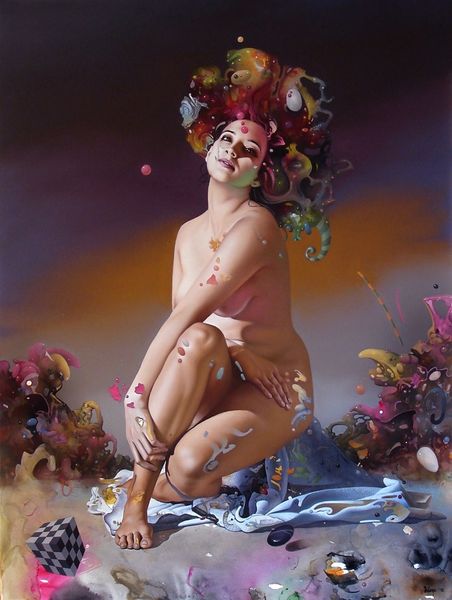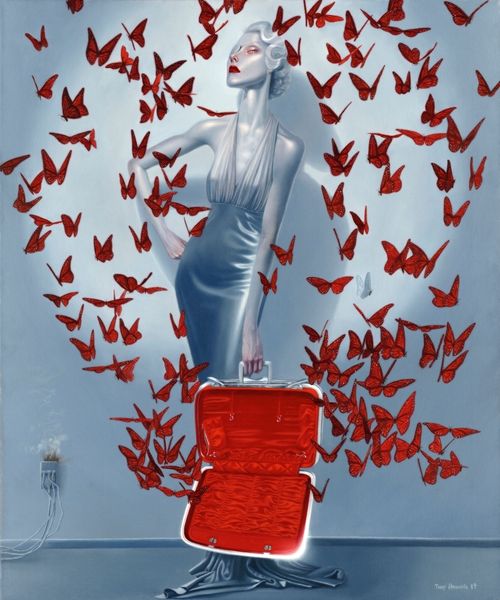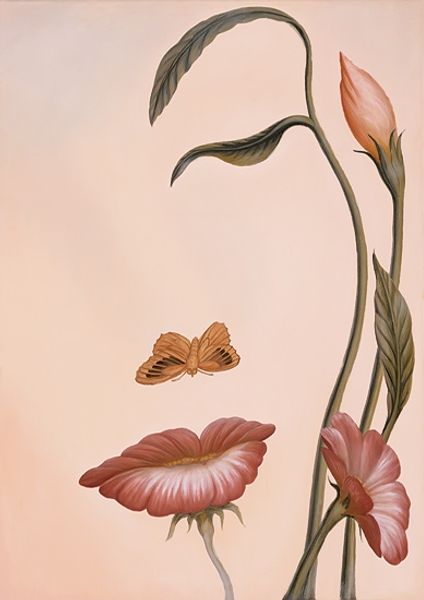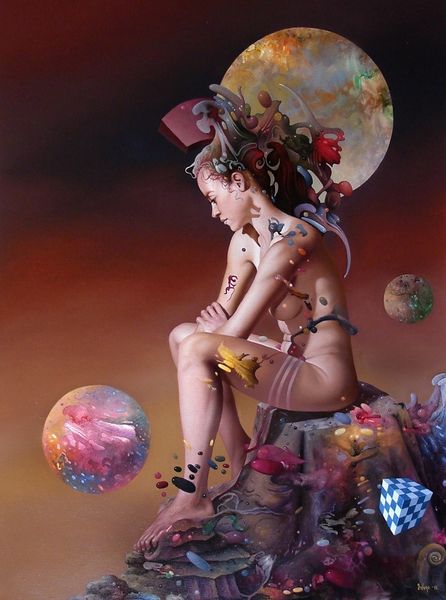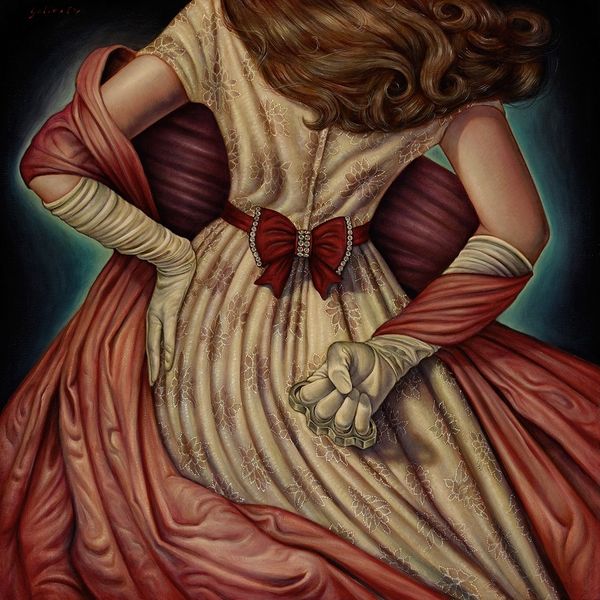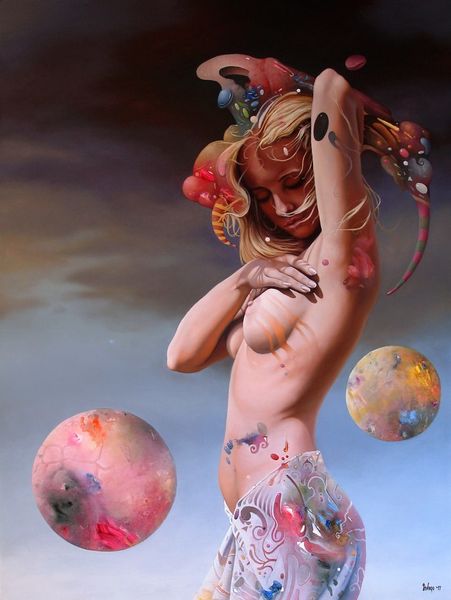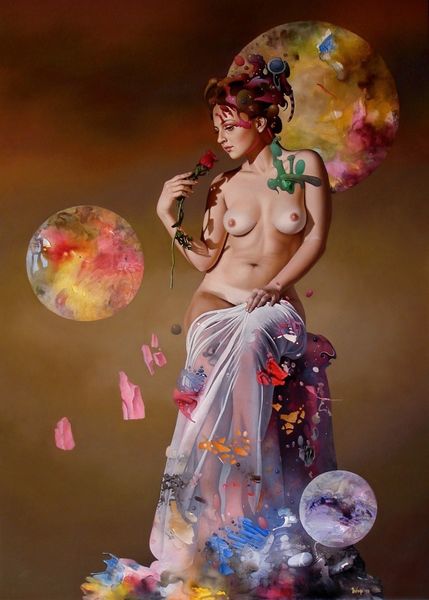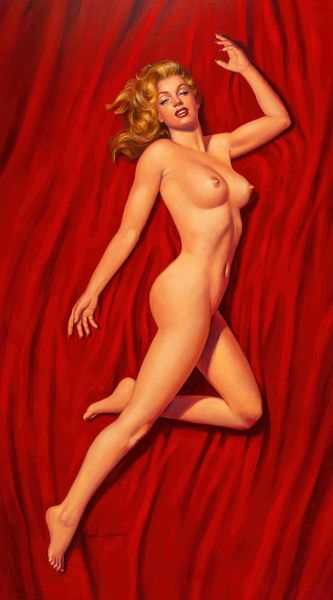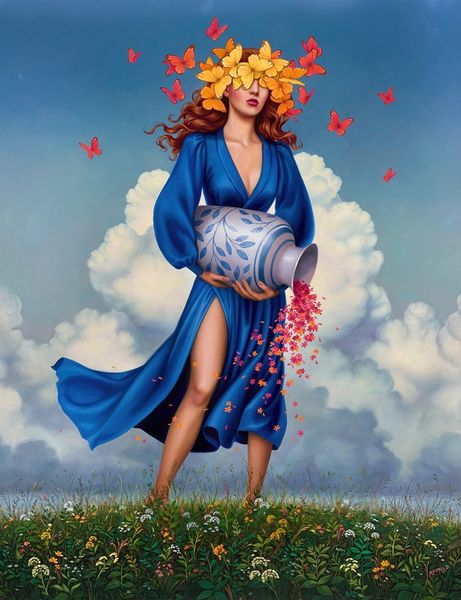
painting, oil-paint
#
portrait
#
narrative-art
#
fantasy art
#
painting
#
oil-paint
#
landscape
#
fantasy-art
#
figuration
#
surrealism
#
surrealism
Copyright: Vladimir Kush,Fair Use
Vladimir Kush's "Hibiscus Dancer," presents us with the age-old symbol of a woman and a flower. The dancer, emerging from the hibiscus, is framed by curtains, a stage for the dance of life. Since antiquity, the flower has been tied to femininity, fertility, and beauty. Think of Botticelli's Venus emerging from a shell, adorned with roses, or Flora, the goddess of spring. In this painting, the hibiscus becomes both costume and character, inviting us to consider the relationship between nature and the feminine form. The red hibiscus, with its vibrant petals, evokes themes of passion, desire, and even danger. This recalls the symbolism of roses in art and literature, which can represent love or be linked to secrecy, as in "sub rosa," beneath the rose. This echoes the complex emotions projected onto the female figure throughout history. We can explore how symbols such as the flower and the dancer serve as channels through which collective memories and subconscious desires flow, shaping our understanding and emotional experience of the work. Ultimately, we recognize the cyclical nature of symbols, recurring across cultures and centuries, reminding us of the timeless human experience.
Comments
No comments
Be the first to comment and join the conversation on the ultimate creative platform.
